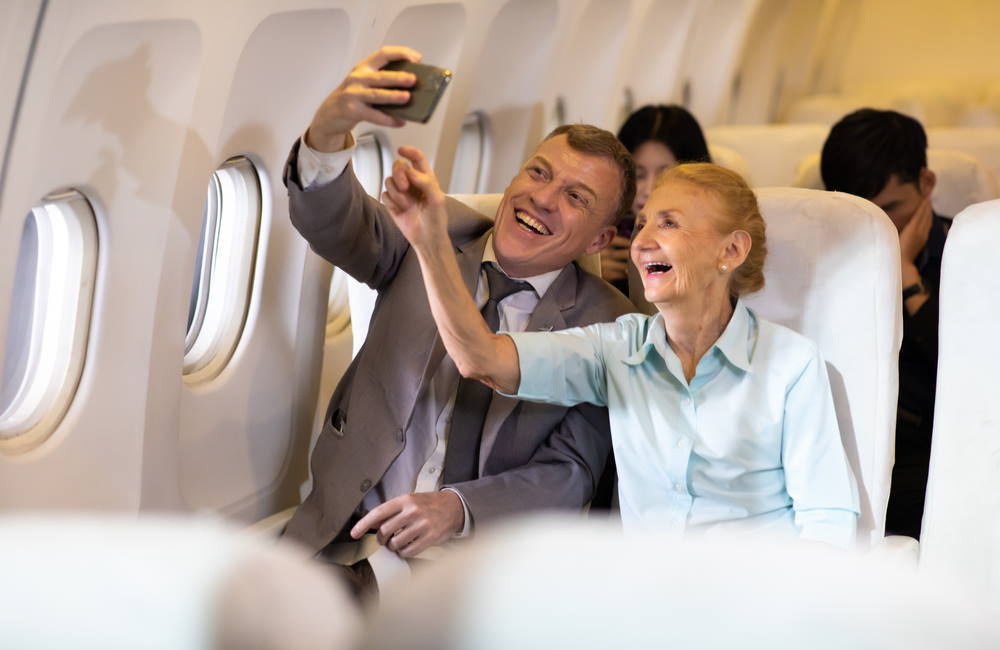
When it comes to moving seniors to a new home, flying makes the most sense. It’s the fastest, safest way to manage a long distance senior relocation. The key is to follow some best practices that have proven to make the experience much smoother for all involved.
Adult children, who often must help parents downsize and relocate to a new home, can benefit from learning those best practices and putting them into action before, during and after the trip. They include the tips listed below.
Many of these issues, including booking all travel arrangements, are handled by partnering with professional senior relocation services.
Tips For Before You Travel
The best long distance senior relocations go well because of a solid plan. The time to create one happens long before you leave the house. The first step is to make a checklist for pre-trip considerations, including the following.
Talk to the doctor. If seniors have chronic medical conditions, check with a physician to ensure they can fly. You may also want to consider having a flight nurse on the trip to manage medications, medical equipment and any issues that may arise during the flight.
Can I Hire a Nurse to Fly With Me?
Book the flights. Book flights as far in advance as possible to get the cheapest rates. Also, make all the flights non-stop, if possible, even if they cost slightly more. Doing so saves seniors the hassle of getting on and off a plane twice and having to navigate a third airport.
Call the airport and airline. If you need special arrangements for seniors, call ahead to set them up with the airport or airline. This includes issues such as getting a wheelchair or assistance in going through security. You can also request special seating arrangements on the plane.
Arrange ground transportation. Make sure that you have dependable ground transportation both to the airport and from the destination airport.
Packing. Make sure that all medication is packed in the carry-on bag and labeled correctly. Also put any snacks and extra water the seniors might want or any other items needed during the flight.
Tips For Day of Flight
If everything is set up during the pre-trip phase, then trip day should go as smoothly as possible. Remember to follow through with those phone calls to the airport and airlines, getting help through the airport, if needed (including a wheelchair) and assistance getting through security and onboard the plane.
Other tips for the day of your flight include:
- Arrive at least two hours before your flight is scheduled to depart to avoid feeling rushed
- Wear comfortable shoes
- Invest in plane seats with plenty of legroom (and close to the bathroom)
- Bring plenty of snacks and water
- Carry a list of emergency contacts in carryon baggage
- Never hesitate to ask for assistance
Tips For After the Flight
Once you’ve arrived at your destination, there are other issues to deal with, including the following. Putting these tips in action can further reduce travel stress for the elderly.
Get assistance through airport. Follow through with the contact made with the destination airport during the pre-trip phase, ensuring you have wheelchairs or other assistance needed for the seniors as they deplane and exit the airport.
Double check ground transportation. Transportation should have been arranged during the pre-flight phase. Double check as soon as you have cell phone service to ensure that they are ready to meet you once you collect your baggage.
Wash hands. Wash everyone’s hands thoroughly in the destination airport bathroom or clean them with a sanitizer.
Drink Water. People often limit what they drink on the flight to cut down on trips to the bathroom. Make sure that once they get off the plane, seniors drink plenty of water. The air inside an airplane is dry, so they should drink water even if they don’t feel thirsty.
What to Eat Before and After a Flight
Get rest. Don’t make extra stops once you arrive. Take the seniors directly to the hotel or new residence where they can rest. This is especially needed if it’s a long flight.
These tips can help make long distance senior relocation by airplane go as smoothly as possible. Put them into action as you begin to plan the trip.